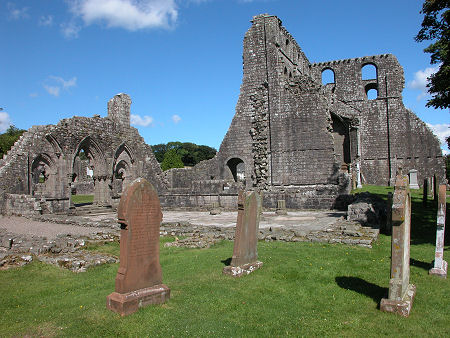 Dundrennan Abbey, Where Alan of Galloway was Buried |
Alan of Galloway lived from about 1175 to 1234. Also known as Alan FitzRoland he was the last of the semi-independent MacFergus dynasty of Lords of Galloway and served as hereditary Constable of Scotland. He was also the grandfather of King John Balliol of Scotland. The wider picture in Scotland at the time is set out in our Historical Timeline.
Alan of Galloway was the son of Roland (or Lochlann), Lord of Galloway and Helen de Morville and was born in about 1175. Alan inherited the position of Constable of Scotland and the Lordship of Galloway from his father, and the de Morville Lordships of Lauderdale and Melrose from his mother.
At this time Galloway was a semi-independent state and the Lords of Galloway had traditionally maintained cautious relations with both Scotland and England, accepting the authority of one or other when circumstances dictated, and acting as a sovereign monarch of Galloway when they could get away with it.
In 1212 Alan of Galloway led a large fleet carrying an army of 1,000 men south in support of King John of England's campaign against the Welsh. He also supplied ships and men to support King John's campaigns in Ireland and France. In 1215, Alan was among the 16 nobles trusted by King John to advise him about his response to the Magna Carta. Nearer home, Alan invaded the Isle of Man in 1229 following the overthrow and murder of Reginald, Prince of Man by his brother Olaf the Black or Olaf Godredsson. Alan forced Olaf to retreat to Norway, though the latter returned at the head of an overwhelmingly strong Norse fleet in 1230 and regained control of the Isle of Man.
Alan of Galloway died in 1234 and is buried at Dundrennan Abbey. He married three or four times. His only legitimate son, Thomas, predeceased him, and after Alan's death his estates and considerable wealth were divided between his three surviving daughters. There was a popular uprising in Galloway intended to make an illegitimate son of Alan's, another Thomas, Lord of Galloway. This failed, and Galloway's era as a semi-independent kingdom came to an end. The best known of Alan's offspring was Devorgilla, Lady of Galloway, who he had with his second wife, Margaret of Huntingdon, the great-granddaughter of King David I. Devorgilla married John, 5th Baron de Balliol, in 1233 and their son, John Balliol, went on to become King of Scotland in 1292.
